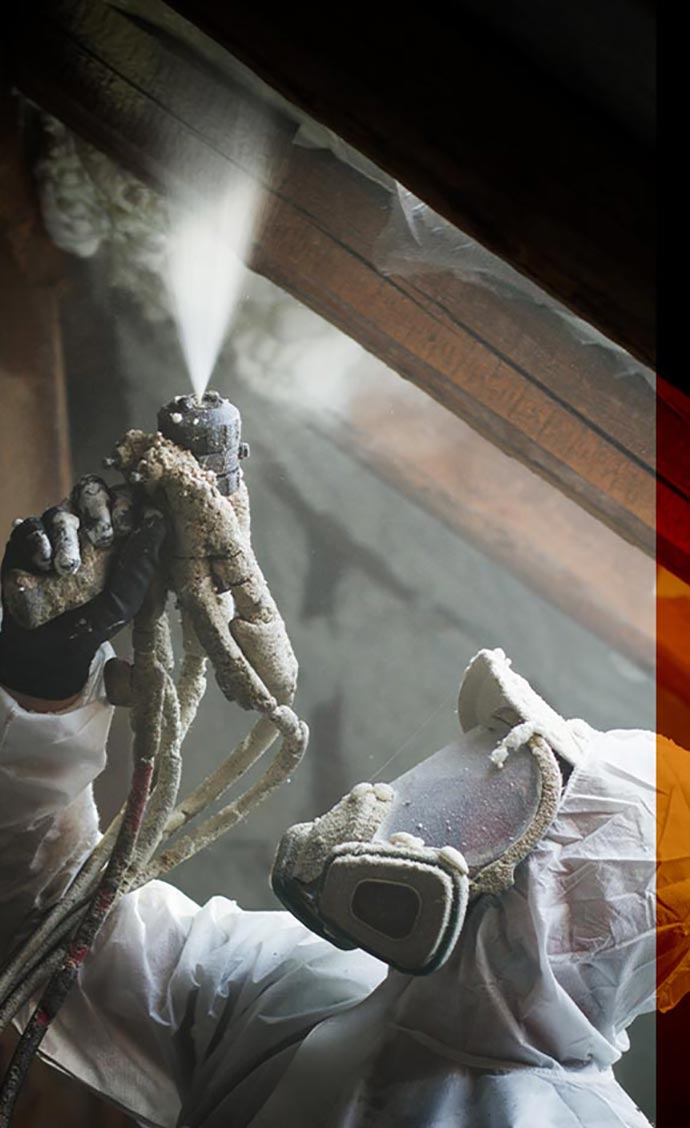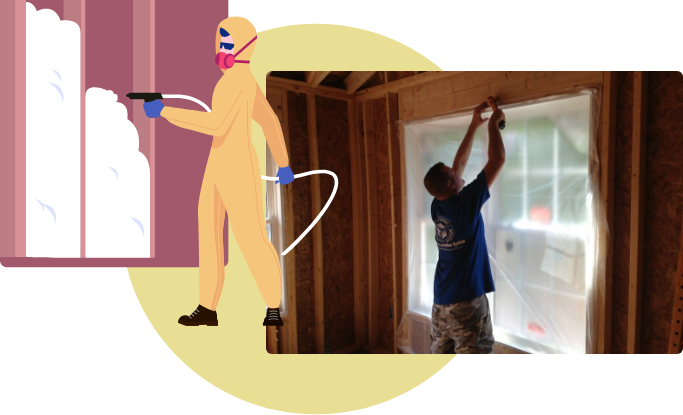


Maintaining energy efficiency is crucial not only for comfort but also for reducing gas and electric expenses. One often overlooked aspect that significantly influences heat loss and energy efficiency is underfloor insulation. At Reed’s Home Solutions, we specialize in tailoring underfloor insulation solutions to enhance the thermal insulation of your ground floor, effectively minimizing energy loss throughout the year.
There are two ways to insulate a crawlspace or basement. Insulation can be installed at the exterior foundation walls, or it can be installed under your first-level floors, between the joists. But which is the correct way to insulate these areas?
Underfloor insulation involves adding insulating materials beneath the floorboards of the ground floor or above unheated spaces such as basements, garages, and crawl spaces. This form of insulation is crucial for blocking cold air from entering through the floor and for preventing heat from escaping, which is vital in maintaining a consistent and comfortable indoor temperature.
In an otherwise well-insulated home, heat transfer to the basement can account for up to 30 percent of the home’s energy loss in winter. In summer, a crawlspace or basement that is not air-sealed and insulated can raise the humidity levels of your home, making your air conditioning system less effective.

"*" indicates required fields
Using fiberglass insulation under floors has long been a common practice in many homes, but there are several compelling reasons to reconsider its effectiveness as an underfloor insulating material. While it may seem like a straightforward solution, the application of fiberglass batts beneath the first level of a home presents multiple challenges and potential drawbacks:
Choosing the right areas for installing floor insulation depends largely on your home’s construction and your specific needs. Underfloor insulation is particularly effective in homes with exposed floor spaces, such as those with basements, garages, or crawl spaces directly below. It’s also essential in older homes where cold air infiltrates through gaps and cracks in the flooring material, leading to increased heating requirements.
An additional consideration is the impact on the basement environment. Insulating only the floors above a basement can result in making the basement itself a non-conditioned, colder, and damper space. This can be particularly disadvantageous if the basement is used for active living spaces such as a laundry room, workshop, or recreational area. In such cases, insulating the basement walls instead might be a more effective way to enhance comfort and energy efficiency throughout the entire home. This can significantly increase the space’s usability by maintaining a warmer environment.
For crawl spaces that are not actively heated and are prone to moisture, insulating the walls with a moisture-resistant material like extruded polystyrene or spray foam can be more beneficial to control the climate and prevent moisture-related issues. Crawl spaces are awkward to access and difficult to use for anything except storage. They often have dirt floors instead of concrete slabs and rarely have windows, nor are they typically used to house HVAC equipment.
A highly effective method for insulating crawl spaces involves using either spray foam or rigid foam. These insulation materials can be applied directly to the walls of the crawl space, with the floor also being protected using specialized foam insulation accompanied by a moisture barrier. Additionally, sealing the perimeter rim joists helps enhance the insulation’s effectiveness. To ensure the space remains airtight, hatchways and vents are covered, and for humidity control, high-capacity SaniDry dehumidifiers are made available.
Reed’s Home Solutions can help determine the best insulation materials and methods for your space. No single solution is correct for every situation. We work with a variety of insulation types, including rigid foam board, spray foam, and cellulose.
The choice of insulation material plays a pivotal role in the effectiveness of underfloor insulation. Here are some of the best practices and materials:
Installing insulation, particularly in challenging spaces like basements, crawl spaces, or floors, requires precision and expertise to ensure maximum effectiveness and compliance with building regulations. Professionals from Reed’s Home Solutions are skilled in assessing your space, recommending the best flooring insulation based on your specific conditions, and ensuring that installation is done correctly to avoid common pitfalls such as condensation or inadequate coverage that can lead to thermal bridging.
Underfloor insulation can be particularly beneficial in cold climates where insulating the floor above a crawlspace may be more effective than insulating foundation walls. However, challenges such as existing plumbing, ductwork, and electrical installations can complicate underfloor insulation in established homes, and moisture resistance is crucial for maintaining insulation integrity. Additionally, areas like enclosed porches or floors over unheated garages that are exposed to the outside often require underfloor insulation as the only viable option.
At Reed’s Home Solutions, we understand that effective insulation depends on a comprehensive evaluation of your home’s specific layout, climate, and energy needs. Our expert team is dedicated to conducting in-depth inspections to devise and implement the most efficient insulation strategy, ensuring optimal comfort, reduced heat loss, and enhanced energy efficiency for your home.

We offer insulation solutions for every situation. If you are looking to add floor insulation or improve the insulation in your basement, crawl space, or garage, Reed’s Home Solutions can help! Give us a call at 844-942-1717 or get a quote online for underfloor insulation and any of our other energy-saving services.
We provide a wide range of customized insulation services to homeowners in the following areas: